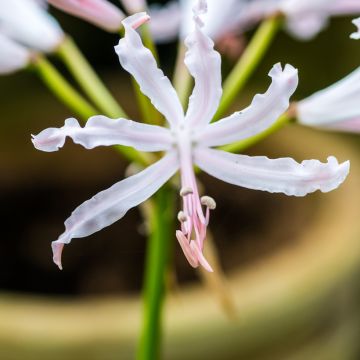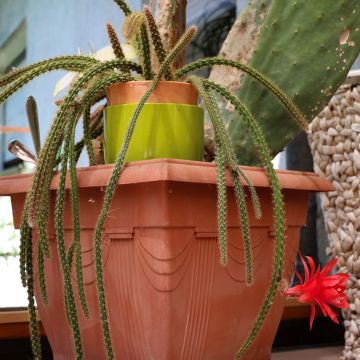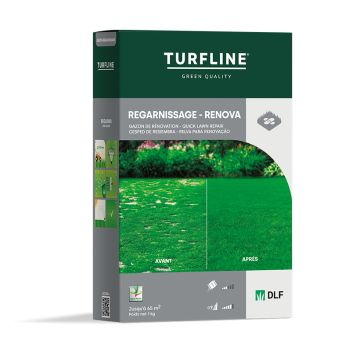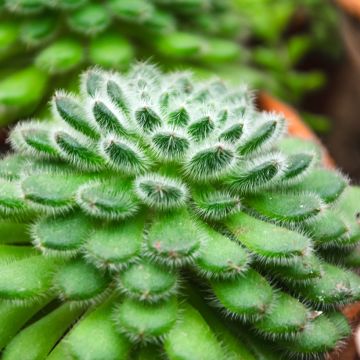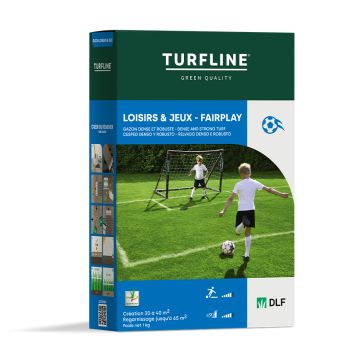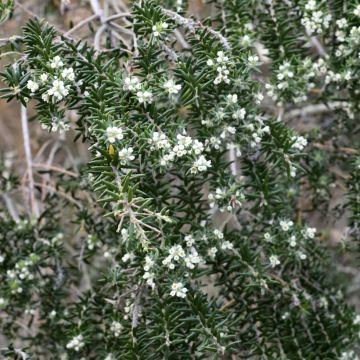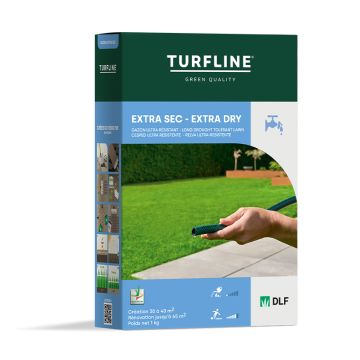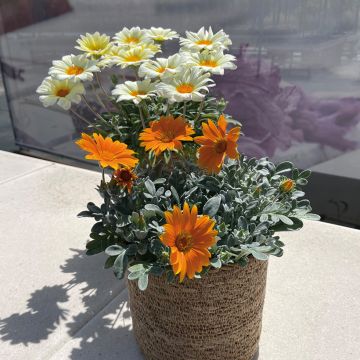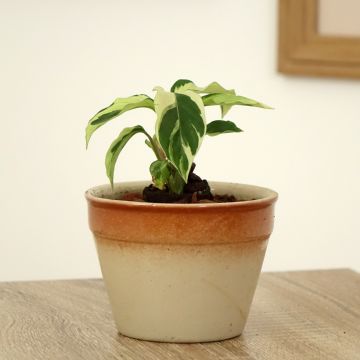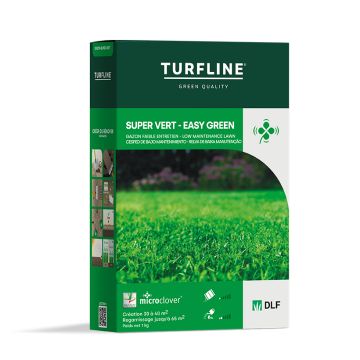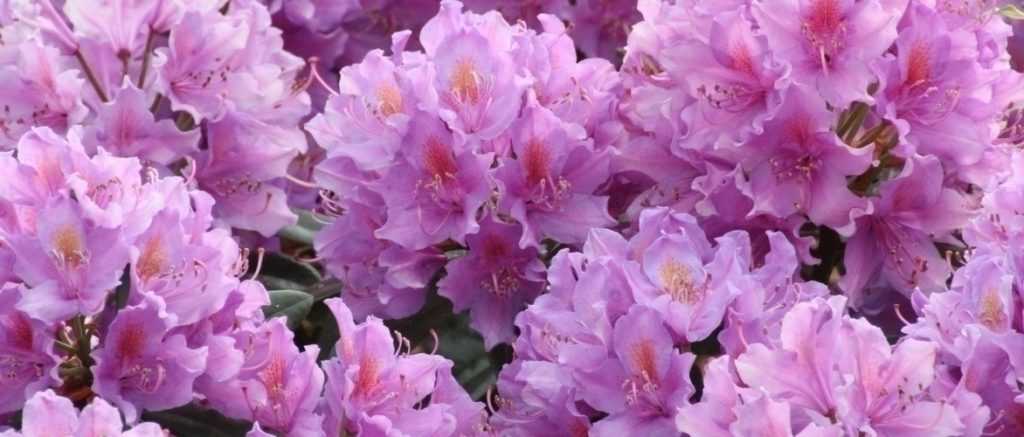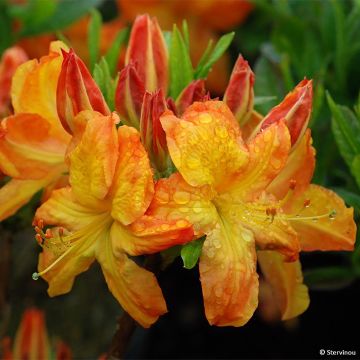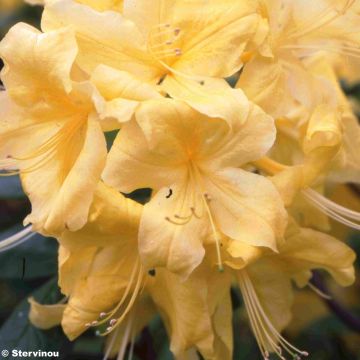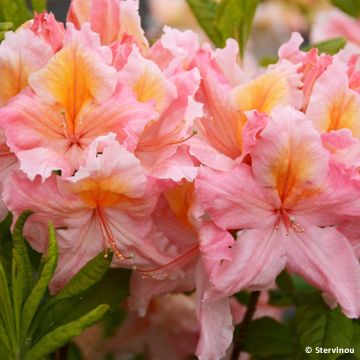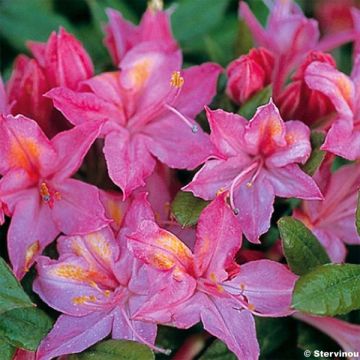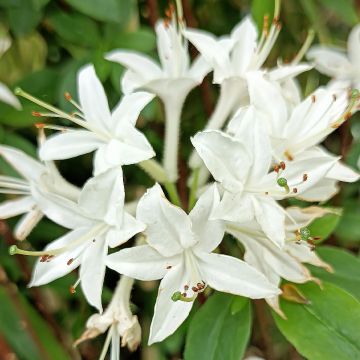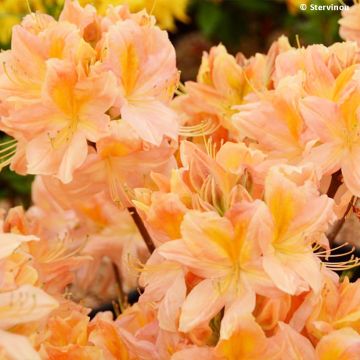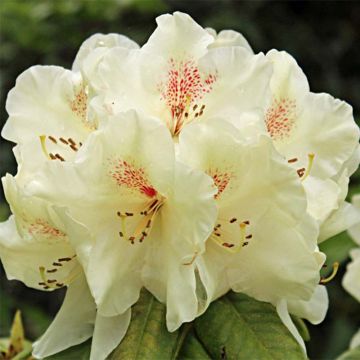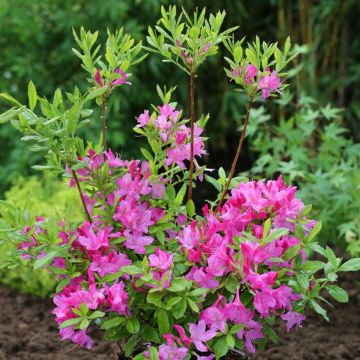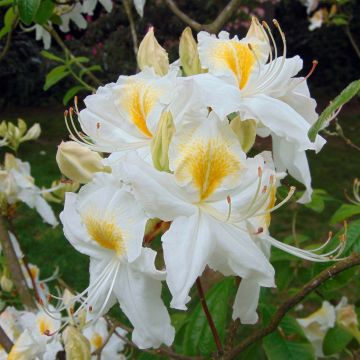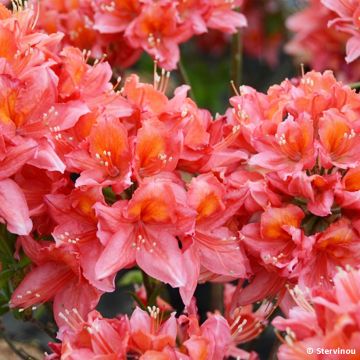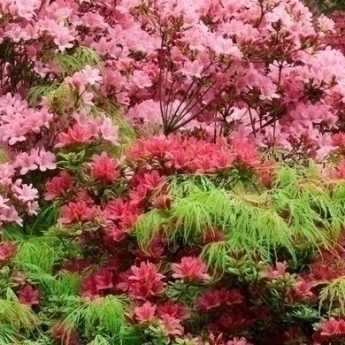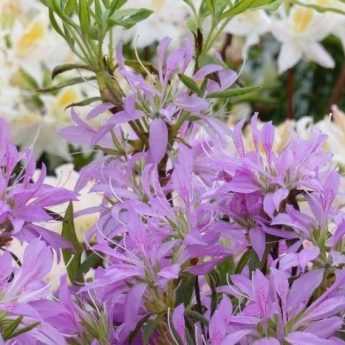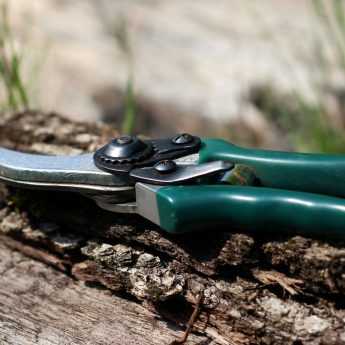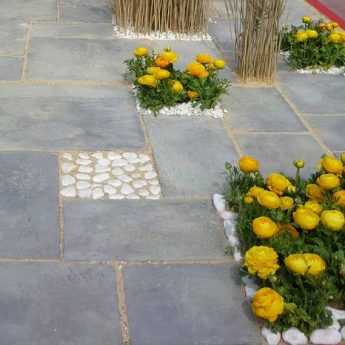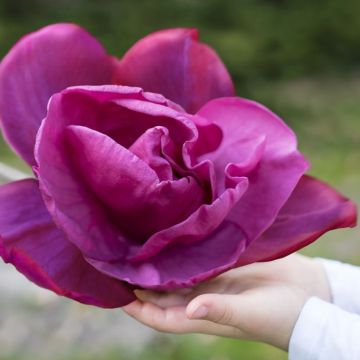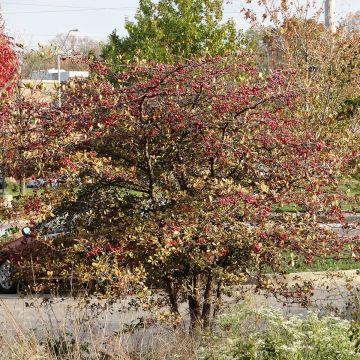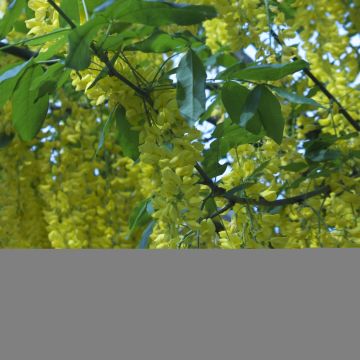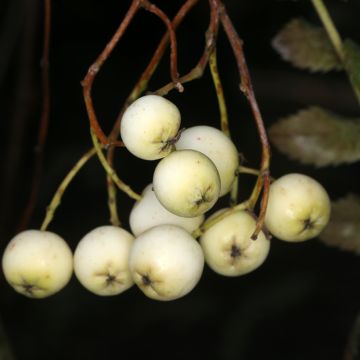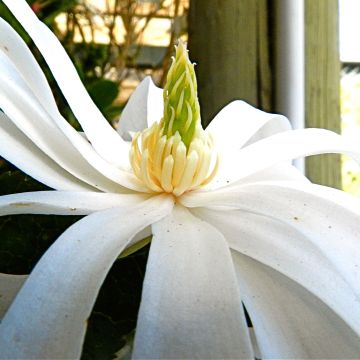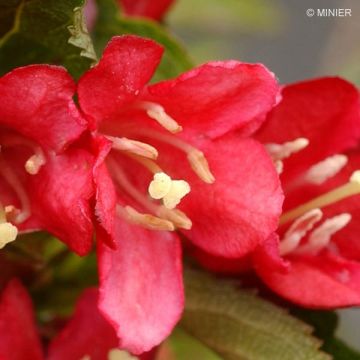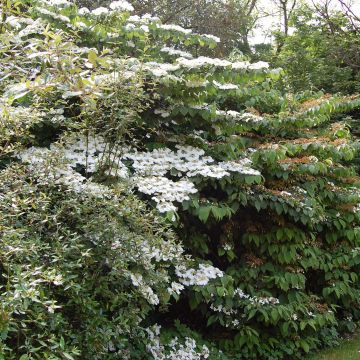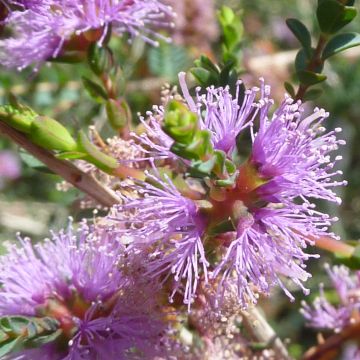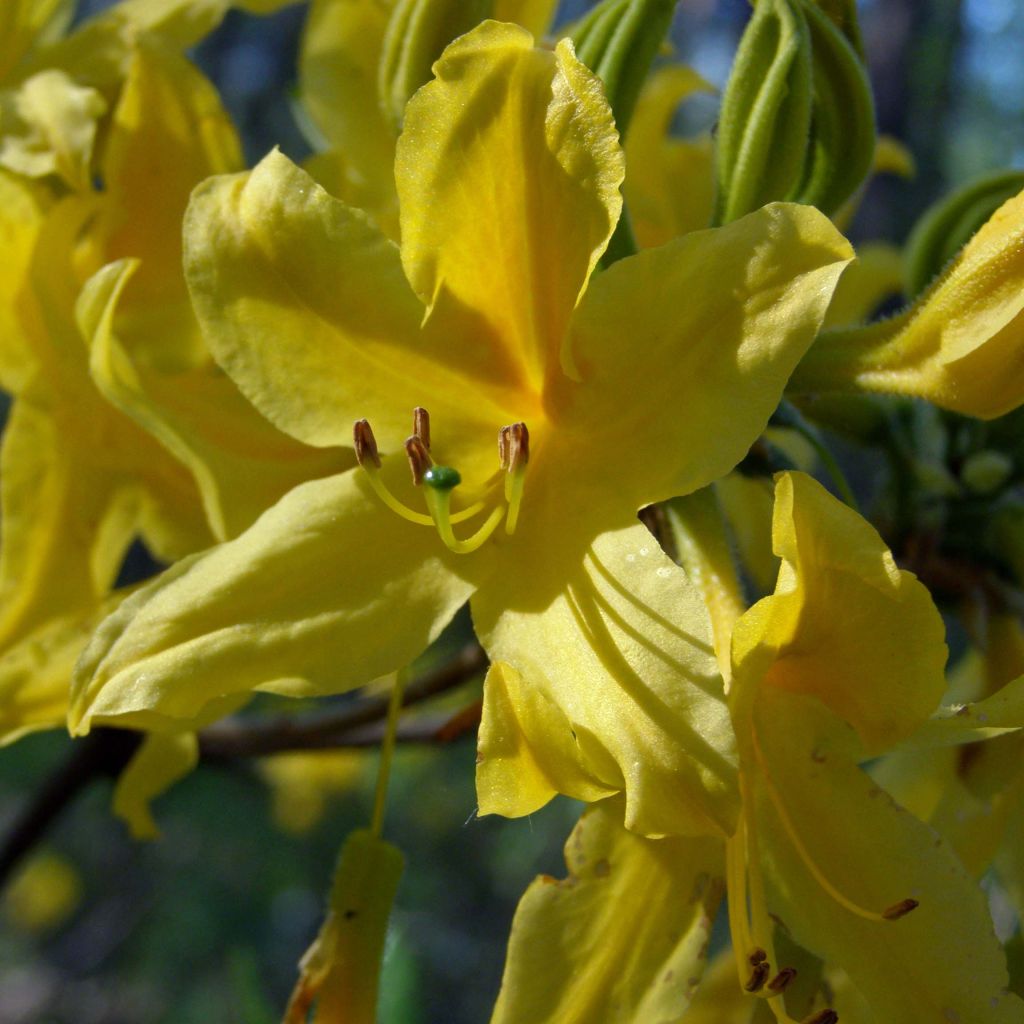

Rhododendron luteum
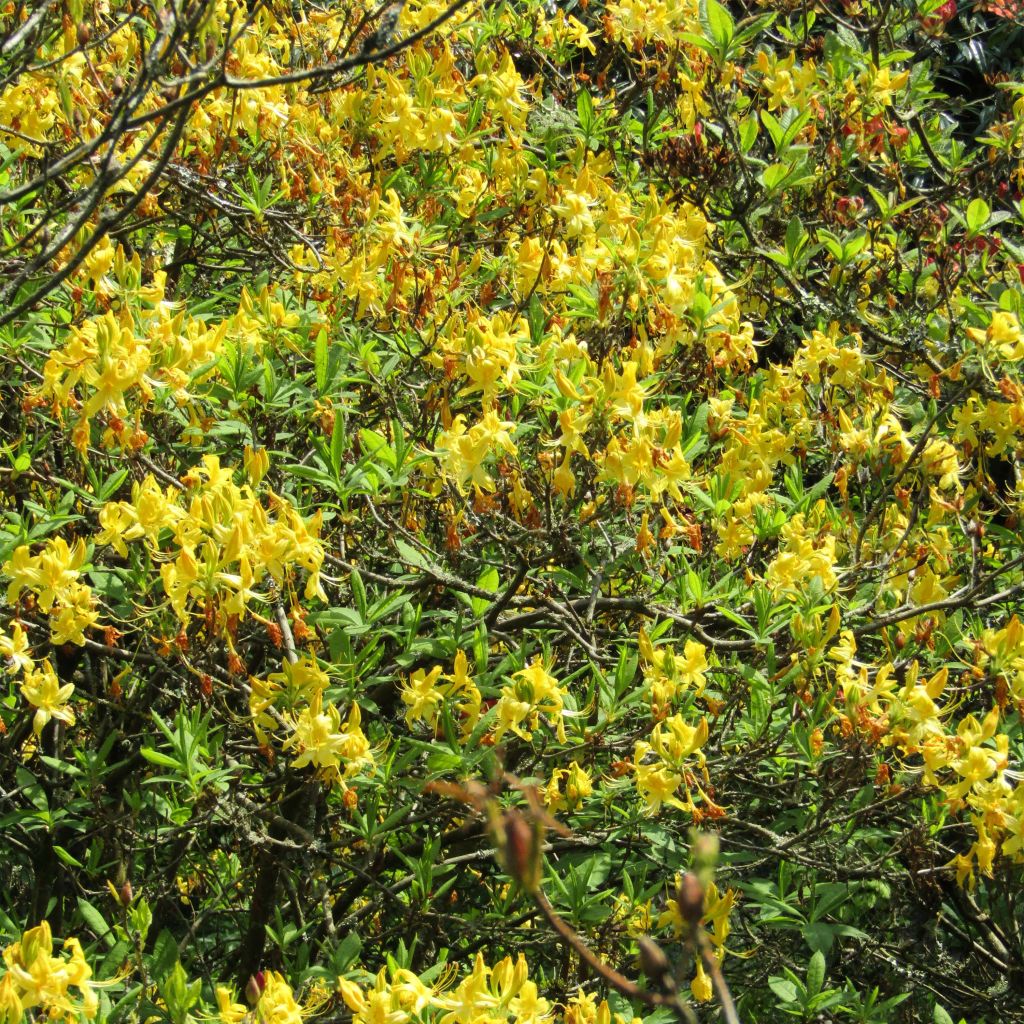

Rhododendron luteum
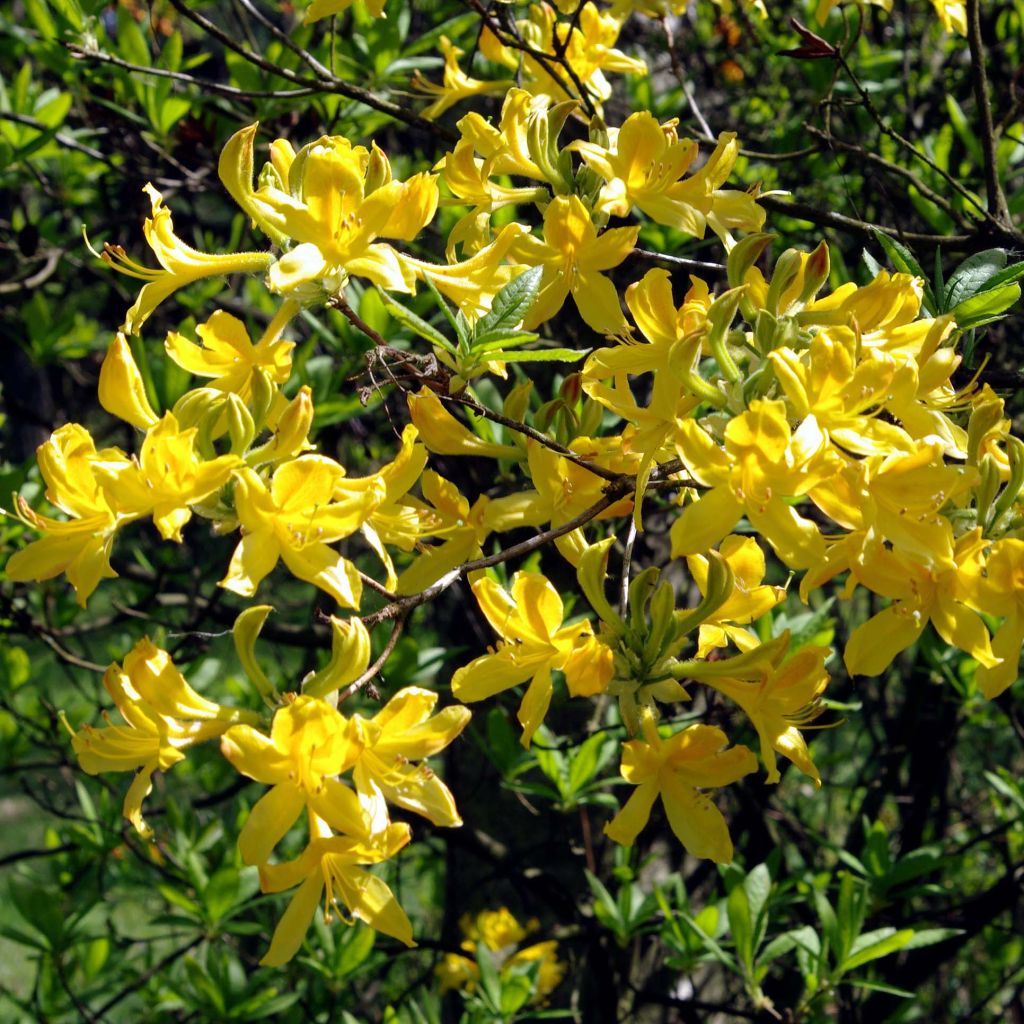

Rhododendron luteum
Rhododendron luteum
Rhododendron (Azalea) luteum
Yellow Azalea, Honeysuckle Azalea
Why not try an alternative variety in stock?
View all →This plant carries a 24 months recovery warranty
More information
We guarantee the quality of our plants for a full growing cycle, and will replace at our expense any plant that fails to recover under normal climatic and planting conditions.
From €7.90 for pickup delivery and €6.90 for home delivery
Express home delivery from €8.90.
Does this plant fit my garden?
Set up your Plantfit profile →
Description
Rhododendron luteum, also known as the Pontic yellow Azalea or Honeysuckle Azalea due to its highly fragrant, bright yellow flowers, is the only deciduous Eurasian botanical species. It is a large shrub that is best appreciated for its beautiful late spring flowers, its fantastic autumn colours and its ease of cultivation. Perfectly hardy, this Azalea will be happy in a semi-shaded position and in lime-free, well-drained, and fairly dry to moist soil. Definitely worth a try!
Rhododendrons are plants of the Ericaceae family, just like heathers, mainly preferring lime-free, acidic soils, and humid climates. The Rhododendron luteum is native to southeastern Europe and southwestern Asia. In Europe, it is found in an area ranging from southern Poland and Austria to the Caucasus (northern Turkey and Syria), in the Balkans, and down to southern Russia. It mostly grows at high altitudes in humid temperate forests, or in meadows in Eastern Europe.
This large Azalea is characterized by an excellent hardiness (down to -26°C (-14.8 °F)) and can grow to 3 to 4 m (9 ft 10 in to 13 ft 1 in) in height and spread in its natural habitat. Widely cultivated in western Europe as an ornamental plant, it is used as a rootstock for less vigorous Chinese Azalea cultivars. Naturalized in certain regions of western and northern Europe, this species has colonized wet areas such as heathlands or marshes in Great Britain. Unlike its evergreen cousin, the Pontic Rhododendron, this plant never competes significantly with the local flora. The yellow Pontic Azalea is also the parent of many hybrids (including the Ghent Azaleas), sought after for their colourful, fragrant flowers.
This beautiful, compact, rounded shrub has an open, rather spreading habit that is slightly taller than wide. It gradually extends by forming suckers that emerge from the roots. Slow-growing, it will reach an average height of 1.75 m (5 ft 8 in) and a spread of 1.50 m (4 ft 11 in) at maturity under good conditions. It flowers at the end of May or in June, at the same time as the foliage appears, when clusters of 7 to 12 funnel-shaped flowers with narrow tubes appear at the ends of the branches. Each flower is 3 to 4 cm (1.2 to 1.6 in) in length and 4 to 5 cm (1.6 to 2 in) in diameter. They exude a powerful honeysuckle fragrance and attract numerous pollinating insects. The brown-coloured branches bear deciduous leaves, elliptical to oval, slightly hairy, from 5 to 10 cm (2 to 3.9 in) in length and 2 to 4 cm (0.8 to 1.6 in) in width. They vary from acid green in spring to bright green in summer, before turning shades of orange, red, and purple in autumn. The young shoots and flower buds are slightly sticky. This shrub thrives in partial shade and moist, humus-rich, well-aerated soil, with an acidic pH between 4.5 and 6.5. Unlike many Rhododendrons, it has a deep root system that does not like being disturbed by transplanting.
The Pontic Azalea can be used at the back of flower beds or in large hedges, along with other ericaceous plants or in a more traditional way with beautiful evergreen shrubs such as Eleagnus ebbingei, Portuguese laurel, large Photinia, Viburnum rhytidophyllum, for example. It can be combined with magnolias, strawberry trees, autumn camellias, and green or purple-leaved Japanese maples... It can also be used as a specimen plant in a small garden. Place it near the house to enjoy its beautiful fragrance.
Remarks:
The nectar of this plant is toxic, as evidenced by the following story: 10,000 soldiers of Xenophon's army were severely affected in 401 BC after ingesting Rhododendron honey. This happened on the coast of the Black Sea, in Turkey.
The fragrance of the Rhododendron is defined as follows in perfumery: fresh, long-lasting, herbaceous, airy, the essential oil of Rhododendron perfectly highlights the acidic and sweet notes of other essential oils.
Rhododendron luteum in pictures
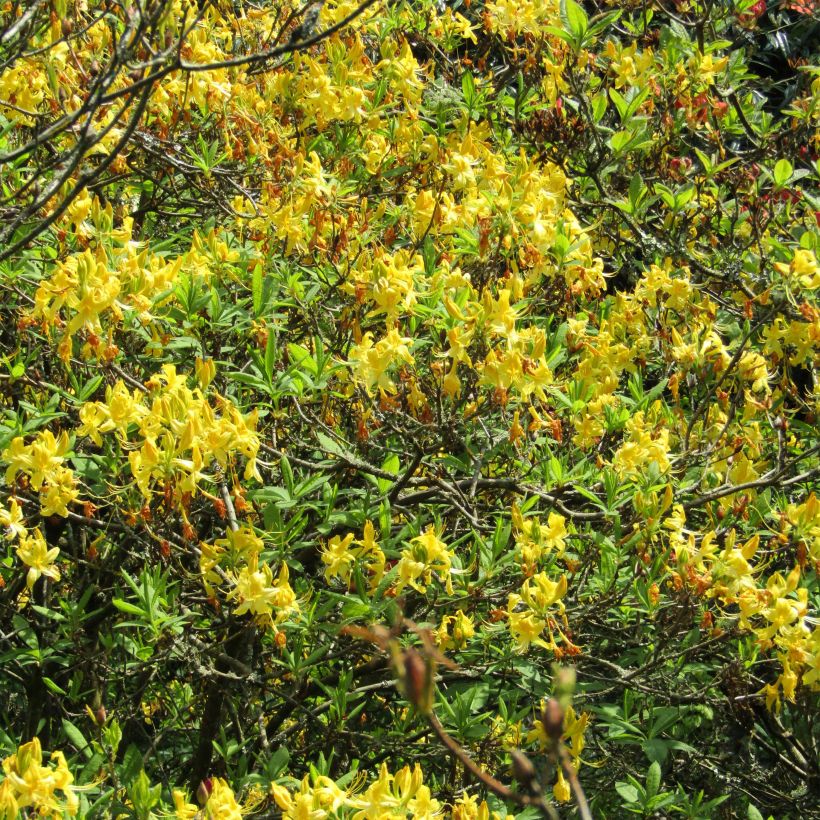

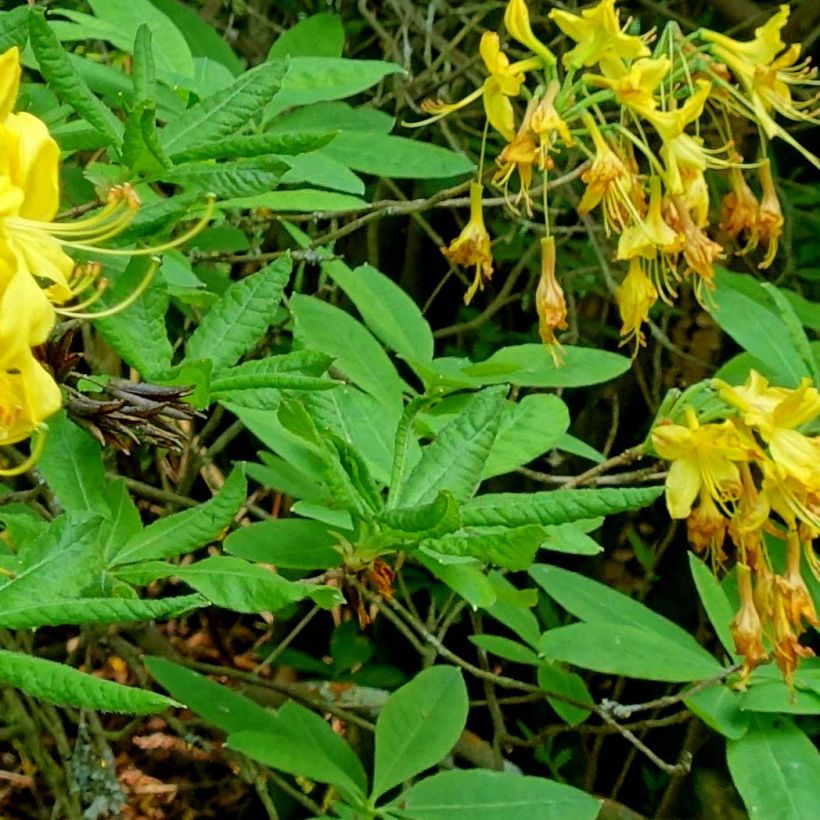

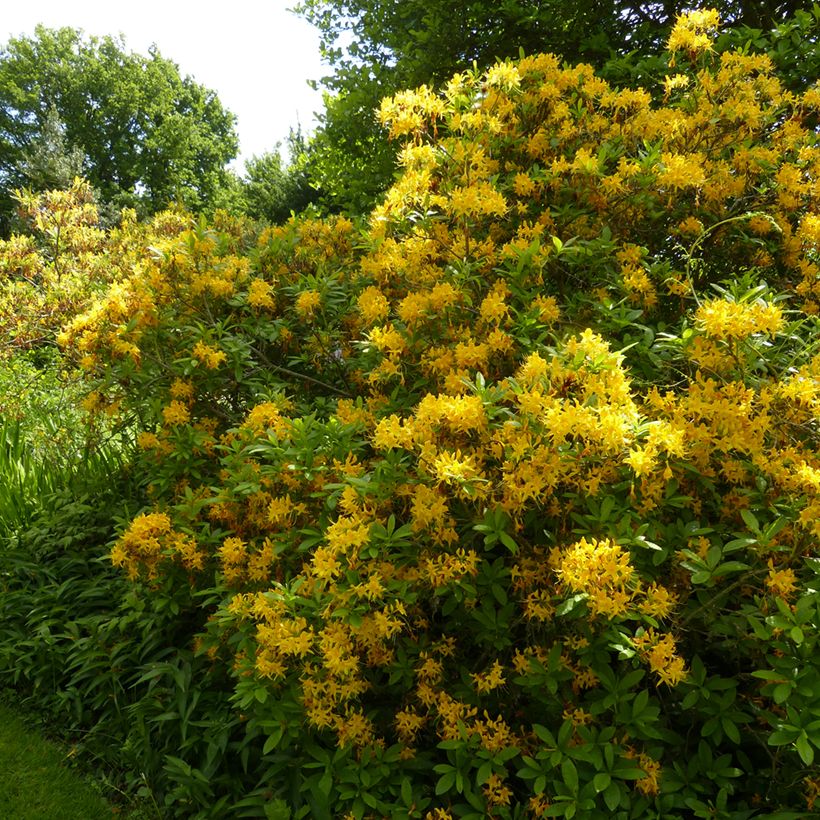

Plant habit
Flowering
Foliage
Botanical data
Rhododendron (Azalea)
luteum
Ericaceae
Yellow Azalea, Honeysuckle Azalea
Caucasus
Other Chinese Azalea
View all →Planting and care
Rhododendron luteum is a plant of mountain origin, with a rainy climate and distinct seasons, hardy down to -26°C (-14.8 °F) but it needs a sheltered location away from strong winds. It prefers well-drained but moist, humus-rich and fertile soils, with a pH between 4.5 and 6.5, in moderate sun or partial shade. Like all plants in the Ericaceous family, it does not tolerate chalky or heavy, constantly wet soils or soils that are waterlogged in winter. Dig a hole three times larger than the pot. Soak the root ball in non-calcareous water and plant it level with the surface of thte soil, in a mixture of 1/4 coir, leaf compost, horticultural grit or perlite, and good quality topsoil. Add blood, fish and bone to the bottom of the planting hole, but without direct contact with the roots (spread a layer of compost over this fertilizer before putting in the plant). Water generously and keep the soil moist in summer.
Azaleas and Rhododendrons generally have a shallow root system. As a result, they are sensitive to long periods of drought. That is why a humus-rich soil and copious watering during dry periods are recommended. In addition, the root system is not very strong, so it is essential to lighten heavy soils with free-draining materials (horticultural grit, perlite or clay pellets) at planting. Apply a mulch of shredded pine bark to the base of the shrub every spring to keep the soil moist while maintaining an acidic pH.
Maintenance consists of removing faded flowers in summer and clearing out dead branches. Azaleas and Rhododendrons can sometimes be attacked by weevils that eat the edges of leaves and rootlets, as well as the famous "Rhododendron lace bug", though not often causing severe damage. Yellowing of the leaves (chlorosis) in Rhododendrons indicates poor iron uptake from the soil and can lead to the premature death of the plant. While lime is often the cause, poorly drained soil or a deeply planted root ball can also explain the phenomenon.
The most commonly observed fungal diseases in 'rhodos' are phytophthora in warm and humid soil, armillaria, and mildew.
Planting period
Intended location
Care
Planting & care advice
Spring-flowering shrubs
Haven't found what you were looking for?
Hardiness is the lowest winter temperature a plant can endure without suffering serious damage or even dying. However, hardiness is affected by location (a sheltered area, such as a patio), protection (winter cover) and soil type (hardiness is improved by well-drained soil).

Photo Sharing Terms & Conditions
In order to encourage gardeners to interact and share their experiences, Promesse de fleurs offers various media enabling content to be uploaded onto its Site - in particular via the ‘Photo sharing’ module.
The User agrees to refrain from:
- Posting any content that is illegal, prejudicial, insulting, racist, inciteful to hatred, revisionist, contrary to public decency, that infringes on privacy or on the privacy rights of third parties, in particular the publicity rights of persons and goods, intellectual property rights, or the right to privacy.
- Submitting content on behalf of a third party;
- Impersonate the identity of a third party and/or publish any personal information about a third party;
In general, the User undertakes to refrain from any unethical behaviour.
All Content (in particular text, comments, files, images, photos, videos, creative works, etc.), which may be subject to property or intellectual property rights, image or other private rights, shall remain the property of the User, subject to the limited rights granted by the terms of the licence granted by Promesse de fleurs as stated below. Users are at liberty to publish or not to publish such Content on the Site, notably via the ‘Photo Sharing’ facility, and accept that this Content shall be made public and freely accessible, notably on the Internet.
Users further acknowledge, undertake to have ,and guarantee that they hold all necessary rights and permissions to publish such material on the Site, in particular with regard to the legislation in force pertaining to any privacy, property, intellectual property, image, or contractual rights, or rights of any other nature. By publishing such Content on the Site, Users acknowledge accepting full liability as publishers of the Content within the meaning of the law, and grant Promesse de fleurs, free of charge, an inclusive, worldwide licence for the said Content for the entire duration of its publication, including all reproduction, representation, up/downloading, displaying, performing, transmission, and storage rights.
Users also grant permission for their name to be linked to the Content and accept that this link may not always be made available.
By engaging in posting material, Users consent to their Content becoming automatically accessible on the Internet, in particular on other sites and/or blogs and/or web pages of the Promesse de fleurs site, including in particular social pages and the Promesse de fleurs catalogue.
Users may secure the removal of entrusted content free of charge by issuing a simple request via our contact form.

































